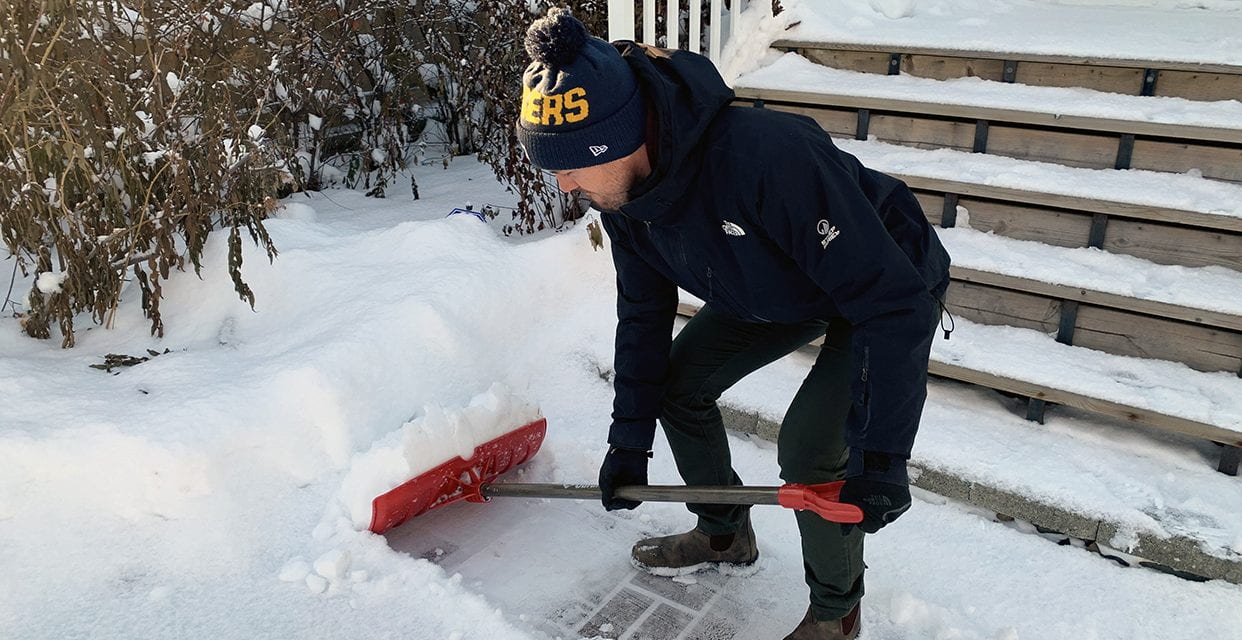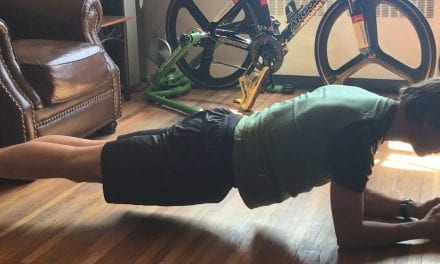Eight Tips for Safer Shovelling
It’s that time of year, winter. Seven long cold months with a constant dropping of snow and an aching back to go with it. By now I am sure you have already removed hundreds of pounds of snow from your sidewalks and garage pads. Ointments, hot packs or a trip to your massage therapist or chiropractor are all too common after shoveling snow. Injuries pile up each winter and a majority are back related.
Shoveling snow is a repetitive movement that is done under heavy load and creates a lot of twisting in the lower spine. With a few tweaks to technique and the proper tools you can get through winters without injury.
Start with a warmup
Warmup? Shoveling is a physical activity and like any activity should be started with a warmup. Use your shovel as a tool to help you. Focus on the areas that will be doing most of the work. Five repetitions for each warmup exercise is adequate.
Lift within a safe range
Even with proper technique, heavy loads create fatigue and fatigue causes the technique to fail setting yourself up for injury. Always lift within reason.
Widen your stance
Assess your shoveling technique by starting at the bottom. Use a wide base to help stabilize yourself on an unstable surface.
Hinge at the hips
Hinging at the hips to a ‘ready position’ will put you in an ergonomically sound position to lift. Hinging at the hips will take the load off of your lower back while shifting it down to the hips and legs.
Extend the hips and legs
When lifting a heavier load always try to use your legs. From a semi-squat position, extend (straighten) your hips and knees while keeping your chest up when lifting a load of snow.
Transfer weight and push
Try staggering your stance, while keeping a wide base and chest up. Transfer your weight from your back leg to the front in a pushing motion to remove snow. This movement will spare your back and arms allowing you to use your legs more to move snow.
Switch sides
Shoveling is a repetitive movement and depending on the size of the area you are clearing it can be a workout. Switch sides when you start to feel fatigued. This will limit the overuse of that side and lower your risk of injury.
Preventative Strength Training
Here are some exercises you can do to help build up strength and make shoveling a little easier this winter:
- Squats
- Deadlifts
- Split Squats
- Planks
- Side Bridge/Planks
- Cable Chops/Lifts
- Medicine Ball Toss
- ¼ Turkish Get Ups
The emphasis should be on rotational and hinging exercises. Developing strength in the hips and stability in the lower spine will go a long way in preventing injuries.
Connect with one of our Exercise Specialists to set up a strength program to help you with shoveling and all of life’s strenuous activities.
by Kyle Dunlop
Kyle Dunlop holds a Bachelor of Kinesiology and is certified with the Canadian Society for Exercise Physiology and National Strength and Conditioning Association as a Certified Exercise Physiologist and Strength and Conditioning Specialist. He specializes in strength, power training, and teaching fundamental movements to individuals and athletes to reduce injury.




